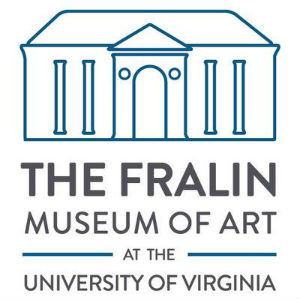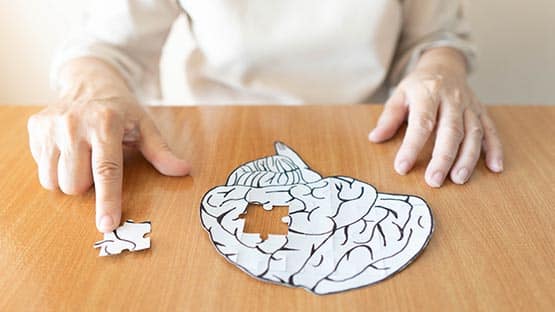
The Inside World, on view at the Fralin Jan. 24-May 24, 2020, presents 112 memorial poles by 55 artists from remote Aboriginal communities in the tropical northern region of Australia known as Arnhem Land. With this collaboration, which illustrates the potential impact that partnership could have on serving students, faculty and visitors, the two museums are exploring the possibility of sharing a larger space on University Grounds in the future.
“The Inside World is an exciting opportunity for the Fralin Museum of Art and Kluge-Ruhe Aboriginal Art Collection — the only museum dedicated to Aboriginal art outside of Australia — to serve students, faculty and visitors in a new way,” said Matthew McLendon, the J. Sanford Miller Family Director at the Fralin. “By coming together in one location, we are able to present visual and academic experiences that advance new ideas and new ways to view the world.”
“Partnering with the Fralin to present Memorial Poles allows Kluge-Ruhe to support the Fralin’s recent commitment to diversity,” said Margo Smith AM, Kluge-Ruhe director. “This exhibition demonstrates how important it is to bring Kluge-Ruhe to University Grounds, creating greater access to the collection for the University and the community.”
Traditionally, memorial poles — known as lorrkkon, ḏupun or ḻarrakitj — were used to house the bones of the deceased. Interment in a memorial pole marked the final point in a long and complex funeral process designed to guide the spirit of the deceased on its final journey. It signified the moment when spirits were considered to have finally returned to their ancestral homes — when they had left all vestiges of the mundane “outside” world and become one with the “inside” realm of the ancestral world.
“Contemporary memorial poles are not ritual objects, but metaphors for the crossing of cultures: they are spirit vessels that hint at the existence of ancestral energy that permeates all things,” said Henry F. Skerritt, curator of the Indigenous Arts of Australia at Kluge-Ruhe. “The result is a celebration of life. Walking in this forest of bones, we find ourselves reborn. Faced with this joyous exploration of a culture so distant and different to our own, the world is made more alive.”
Today, these poles are made as works of art, and artists included in the exhibition are some of the most respected contemporary artists working in Australia today. These include John Mawurndjul AM, who was recently honored with a major retrospective at the Museum of Contemporary Art in Sydney and the Art Gallery of South Australia in Adelaide, and Djambawa Marawili AM, whose work has been included in the Moscow, Istanbul and Sydney Biennales. Two of the artists in the exhibition, Gabriel Maralngurra and Joe Guymala, will be traveling to Charlottesville for the exhibition opening and will offer a Saturday Special Tour on Jan. 25th at 2 p.m. with Henry Skerritt.
The Inside World: Contemporary Aboriginal Australian Memorial Poles originated at the Nevada Museum of Art in Reno, Nevada and was organized by Henry F. Skerritt, curator, Kluge-Ruhe Aboriginal Art Collection of the University of Virginia. The exhibition at the Fralin is drawn from the collection of Debra and Dennis Scholl and the Kluge-Ruhe Aboriginal Art Collection of the University of Virginia. It is accompanied by a fully illustrated catalogue edited by Skerritt.
This exhibition is made possible through generous funding from The Fralin Museum of Art Volunteer Board, The UVA Arts Council, The Embassy of Australia, UVA Arts Endowment and Arts$. Programming support was provided by the Mapping Indigenous World Lab of the Institute of the Humanities & Global Culture.
About the Fralin Museum of Art at the University of Virginia
Established in 1935, the University of Virginia Art Museum became the Fralin Museum of Art in 2012 in honor of a bequest of American art and service to the university by Cynthia and W. Heywood Fralin. The Museum maintains a collection of more than 13,000 works of art, including American and European painting, works on paper, and sculpture from the 15th through the 20th centuries; art from the ancient Mediterranean; Asian art; and Native and ancient American art. Housed in the historic Bayly Building near the Rotunda on the landmark UVA campus, the Fralin is dedicated to serving the widest possible audiences and engaging comprehensive visual education to enhance its visitors’ understanding of world cultures. Throughout the year the Museum presents a diverse selection of exhibitions, programs, research and events that bring the university and broader community together.
For more information, visit http://uvafralinartmuseum.virginia.edu
About the Kluge-Ruhe Aboriginal Art Collection of UVA
The Kluge-Ruhe Collection is the only museum in the United States dedicated to the exhibition and study of Aboriginal Australian and Torres Strait Islander art and one of very few museums that exclusively show the artwork of people of color. The collection comprises more than 2000 objects in a variety of media, from paintings on bark and canvas, to photography and sculpture. With the understanding that Indigenous people are the best experts on their art and culture, Kluge-Ruhe endeavors to bring Aboriginal artists to Charlottesville to engage directly with central Virginia audiences. The museum’s exhibitions and programs stimulate cross-cultural conversations in a welcoming and inclusive environment. The Kluge-Ruhe is open Tuesday-Sunday and is free and open to the public.
Learn more at www.kluge-ruhe.org or on the museum’s Facebook page.










